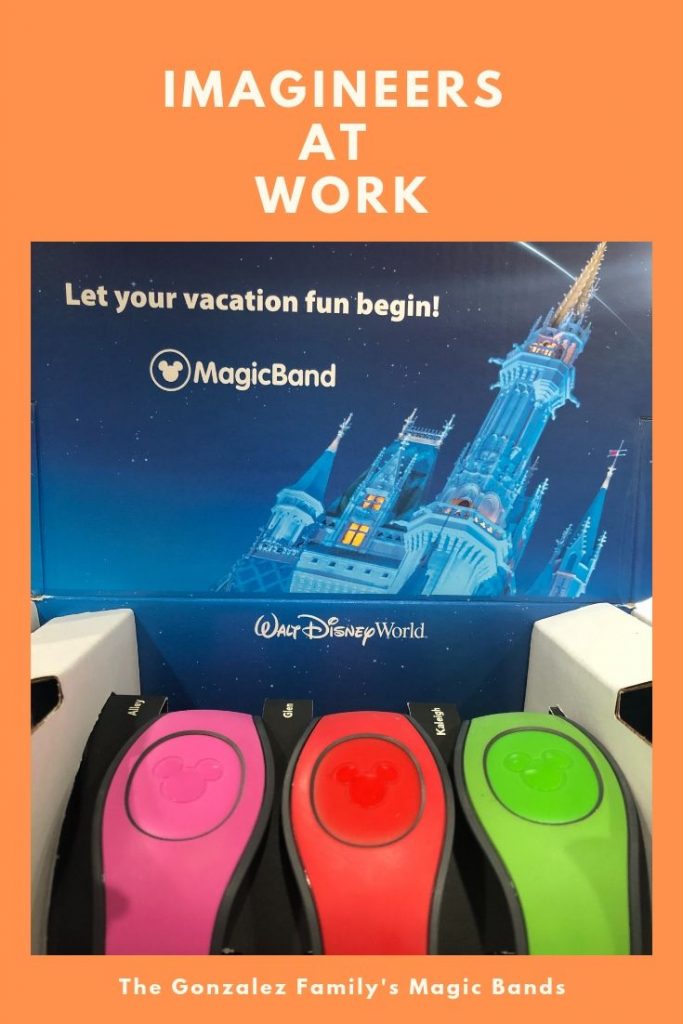The Disneyfication of Work

When Disney was developing the MagicBand, they faced plenty of design challenges. One challenge in particular was what the MagicBand readers at each ride’s access point would look like.
The team designing the MagicBand system wanted a waist-high, modern-looking stand featuring the outline of Mickey Mouse’s head. To access a ride, a park guest would touch the Mickey on their MagicBand to the Mickey on the reader. If the reader’s Mickey glowed green, the guest could enter the ride. If it glowed blue, the guest would need assistance. (Using a red light was a no-no.)
The “Mickey to Mickey” access points were elegant and intuitive, and the uniform design of the readers ensured guests would recognize them no matter where they encountered them in the park.
Debate to Excellence
Reportedly, Disney’s Imagineers weren’t happy with this solution. The Imagineers are the creative powerhouses responsible for the design and construction of the company’s theme parks. They argued that the MagicBand readers would disrupt the immersive experience of each attraction. The shiny, high-tech scanners might fit in well at Space Mountain, but would you really expect to find such a thing on the grounds of an ancient, haunted mansion?
These were two valid but competing perspectives on what would deliver the right experience for guests.
If you’re doing employee experience right at your organization, these are probably the kinds of debates you’ll be having.
Link the Employee Experience to Business Goals
Disney invested $1 billion in MagicBands because they wanted park guests spending less time waiting in line and more time buying and creating memories.
What do you want employees to do less and/or more of and how does the experience of working at your organization contribute to or inhibit that?
While “employee experience” may seem like a new and trendy topic, recognizing the business value of a good employee experience is not.
Way back in 1995, the Harvard Business Review published an article called Putting the Service-Profit Chain to Work. In it, the authors wrote:
Profit and growth are stimulated primarily by customer loyalty. Loyalty is a direct result of customer satisfaction. Satisfaction is largely influenced by the value of services provided to customers. Value is created by satisfied, loyal, and productive employees. Employee satisfaction, in turn, results primarily from high-quality support services and policies that enable employees to deliver results to customers.
The Service-Profit Chain
| Support services & policies | → | Satisfied, loyal, productive employees | → | Customer Value | → | Customer Satisfaction | → | Customer Loyalty | → | Profit & Growth |
They went on to say that the “internal quality of a working environment contributes most to employee satisfaction. Internal quality is measured by the feelings that employees have toward their jobs, colleagues, and companies … Internal quality is also characterized by the attitudes that people have toward one another and the way people serve each other inside the organization.”
A growing number of organizations are tapping the proven ROI of a better employee experience. But, at the moment, few companies can claim an advantage in this area. In his book, The Employee Experience Advantage (Wiley, 2017), Jacob Morgan classifies just six percent of the companies he analyzed as “experiential.” This means there’s an opportunity for you to help set your organization apart … Now, if you can just figure out whether your employee badge readers should be shiny and modern or dusty and cobwebbed …
By the way, the MagicBand designers and the Imagineers ultimately arrived at a compromise. The readers would have both consistent features, like the Mickey icon, as well as thematic elements to help them blend in with each attraction.
